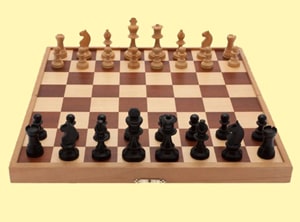English documentary on the history of chess with video and transcript to practice reading and listening comprehension and expand your vocabulary in context Source of documentary: TED-Ed YouTube Channel Listening comprehension https://www.youtube.com/watch?v=YeB-1F-UKO0 Reading comprehension What is chess? The attacking infantry advances steadily. Their elephants already having broken the defensive line. The king tries to retreat, but enemy cavalry flanks him from the rear. Escape is impossible. But this isn't a real war, nor is it just a game. Over the roughly one-and-a-half millennia of its existence, chess has been known as a tool of military strategy, a metaphor of human ...
Home » English Documentaries with Transcript » English Documentary on Chess with Transcript & Video

English Documentary on Chess with Transcript & Video
Updated: by Dr. Mohammad Hossein Hariri Asl
Time to Read: 5 minutes | 427 Views | 6 Comments on English Documentary on Chess with Transcript & Video
Share This Post
About the Author
Dr. Mohammad Hossein Hariri Asl is an English and Persian instructor, educator, researcher, inventor, published author, blogger, SEO expert, website developer, entrepreneur, and the creator of LELB Society. He's got a PhD in TEFL (Teaching English as a Foreign Language).
Number of Posts: 4236



I really enjoyed this documentary because I like chess and remember that I played chess like 3 or 4 years ago and I was kinda good at this game. Chess it’s not a war and a game, I can say that this game is really unique.
That’s right, Soroosh. Chess is a strategic game that can potentially make us more intelligent and thoughtful if played regularly and seriously.
Chess has always seemed an interesting game to me. In our family, I am the only one who finds it interesting and has passion for it. So I am alone it this chase and I have to play online or practice with AL.
Thank you for your comment. However, I can see that Soroosh has shown much interest in chess in his comment.
Feedback
I am alone it this chase = Did you mean “I am alone in this case”?
I never liked playing chess but after listening to this documentary I am more interested! Now it seems more interesting and entertaining.
I’m glad that this documentary has made you more interested in chess, which is a perfect strategic game with a special name with a Persian root, that is, Shah which means king.